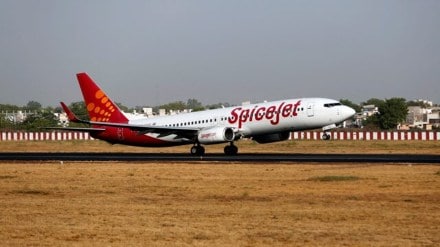Low-cost carrier SpiceJet plans to triple its active fleet and more than double its daily flights by mid-November as it works to regain lost ground.
Addressing shareholders at the airline’s 41st annual general meeting (FY25), Ajay Singh, chairman and managing director, said on Tuesday, “The company is undertaking a major expansion of capacity over the next few weeks. We will be adding to our fleet 20 aircraft comprising 19 narrow bodies and one widebody by the middle of November.”
What did Ajay Singh say?
In addition, SpiceJet will bring back into service around 10 grounded aircraft by April. “But four of those will join in November itself and with that we will have a near tripling of our existing active fleet,” Singh added.
The Delhi-based airline aims to expand its daily flights to 300 by mid-November, up from the current 125. “We feel this will make SpiceJet a more relevant and important player in the Indian aviation space,” Singh said.
What does DGCA data suggest?
Once India’s fourth-busiest airline, SpiceJet carried just 246,000 passengers across its domestic routes in July 2025—less than what it used to fly in a single week a decade ago, when weekly averages were around 264,000 passengers. The shrinking passenger base has been reflected in its market share, which dropped to an all-time low of 1.9% in June, according to DGCA data.
“The increased capacity will get us new markets, and new slots at airports and also significantly improve our financial position and numbers. We have potentially a great future ahead to get back some of our lost glory,” Singh added.
SpiceJet’s fleet has shrunk dramatically over the years—from 100 aircraft in 2015 to 56 as of June 2025. Of these, fewer than half are operational, at just 21 aircraft, nearly a third of which are smaller Bombardier Q400 turboprops. Its grounded fleet of 35 planes, up from 30 in September 2024, consists largely of Boeing 737 family aircraft, the airline’s mainstay.
The turnaround push comes as SpiceJet’s net worth turned positive in FY25. In June, it also reached a settlement with Carlyle, its largest lessor, restructuring $121.18 million of lease obligations. The deal unlocked about $80 million of cash maintenance reserves for aircraft and engine upkeep, along with around $10 million in cash for the airline’s use.
At the AGM, shareholders voiced concerns over the underperformance of SpiceJet’s stock. Responding, Singh said, “Fixed cost is the biggest cost which we are not able to amortise because of the small size of the fleet. As our fleet increases, you will see that fixed costs are getting amortised and the overall cost going down quite substantially in the coming quarters.”
